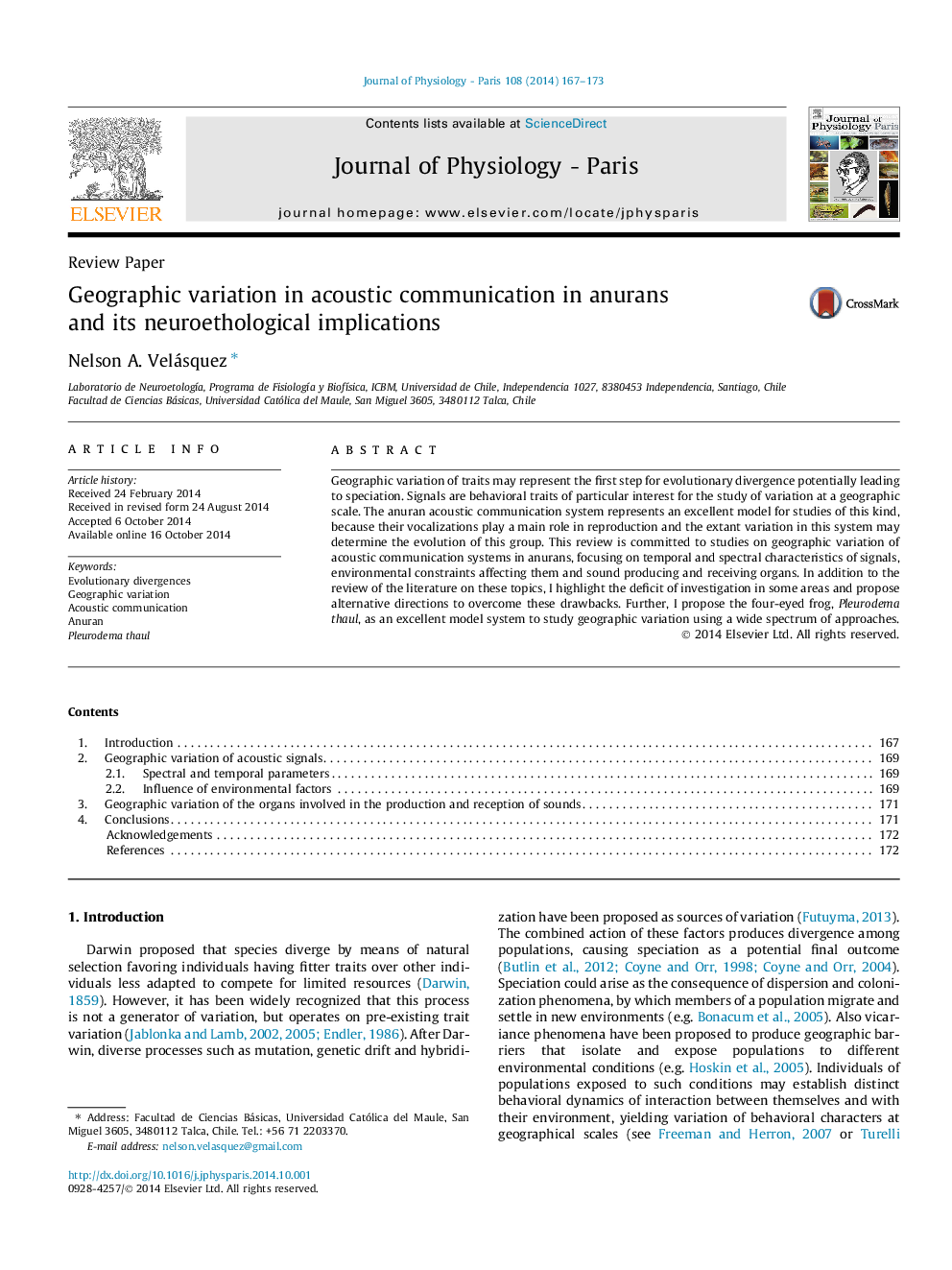| Article ID | Journal | Published Year | Pages | File Type |
|---|---|---|---|---|
| 2842250 | Journal of Physiology-Paris | 2014 | 7 Pages |
•Anuran acoustic communication systems exhibit variation at a geographic scale.•This variation is expressed at the behavioral and neurobiological levels.•Signal variation is matched with variation in the emitter and receiver organs.•Only few studies address the topic of geographic variation at the neurobiological level.•Pleurodema thaul arises as an excellent novel model system for studies on this perspective.
Geographic variation of traits may represent the first step for evolutionary divergence potentially leading to speciation. Signals are behavioral traits of particular interest for the study of variation at a geographic scale. The anuran acoustic communication system represents an excellent model for studies of this kind, because their vocalizations play a main role in reproduction and the extant variation in this system may determine the evolution of this group. This review is committed to studies on geographic variation of acoustic communication systems in anurans, focusing on temporal and spectral characteristics of signals, environmental constraints affecting them and sound producing and receiving organs. In addition to the review of the literature on these topics, I highlight the deficit of investigation in some areas and propose alternative directions to overcome these drawbacks. Further, I propose the four-eyed frog, Pleurodema thaul, as an excellent model system to study geographic variation using a wide spectrum of approaches.
